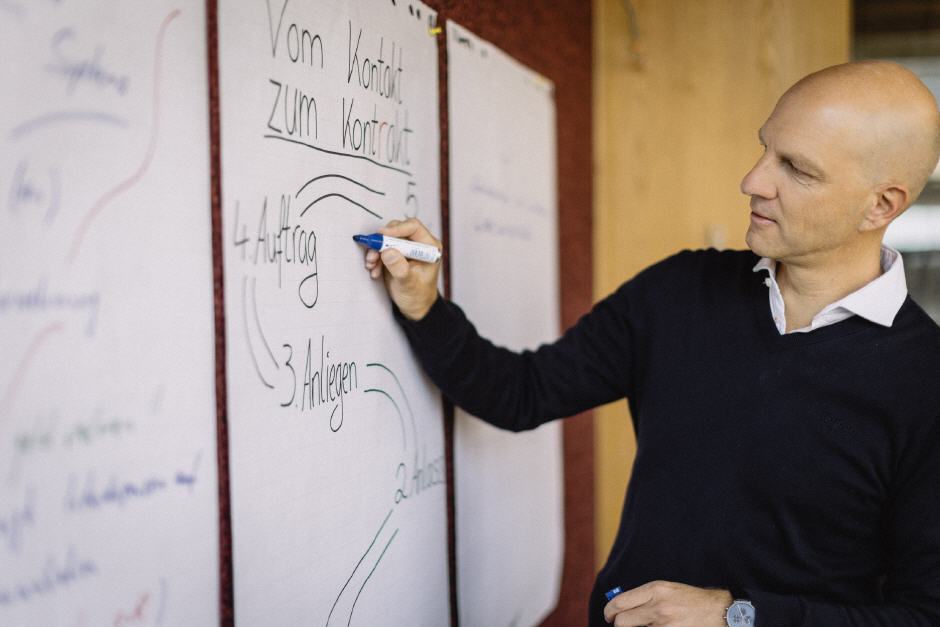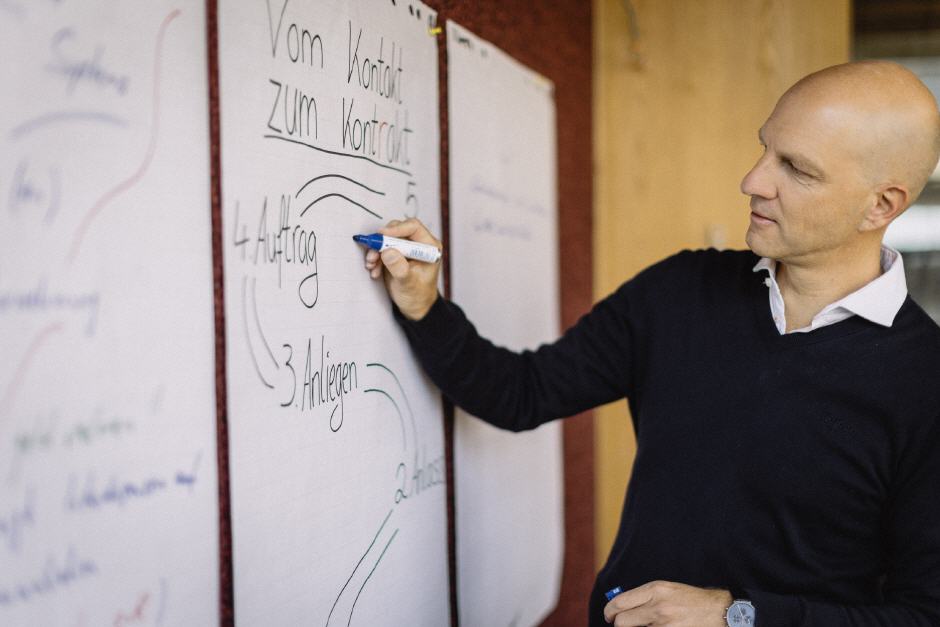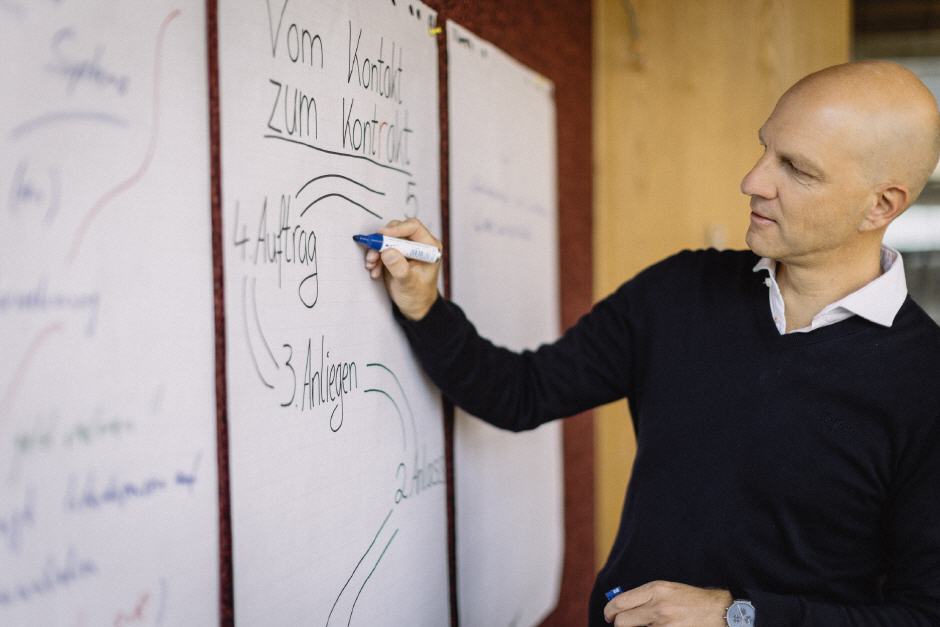systemical organisational development
Die systemische Organisationsentwicklung ist ein Teilbereich der Unternehmensberatung. Diese Herangehensweise zeichnet sich dadurch aus, dass alle an einem System (an einer Firma, in einem Unternehmen, in einem Verein, in einer Stiftung) beteiligten Menschen Berücksichtigung finden.
Ziel ist die Initiierung eines nachhaltigen Veränderungsprozesses, den es sorgfältig und für alle Beteiligten wertschätzend zu begleiten gilt.
Eine der historischen Wurzeln ist die Familientherapie nach Virgina Satir und die Idee, diese auf komplexere, größere, soziale Systeme zu übertragen.
Entscheidend ist hierbei, dass Fehler oder Themen als Hinweise und die aufzeigenden Menschen als Impulsgeber*innen gesehen werden.
Erquicklicher als das Licht
„Wo kommst Du denn her ?“ fragte der König.
„Aus den Klüften,“ versetzte die Schlange, „in denen das Gold wohnt.“
„Was ist herrlicher als Gold?“, fragte der König.
„Das Licht,“ antwortete die Schlange.
„Was ist erquicklicher als das Licht?“, fragte jener.
„Das GESPRÄCH !“
(Johann Wolfgang v. Goethe)
Der konkrete Ablauf gliedert sich in 4 Schritte:

Schritt 1:
Mittels Gespräch vom Kontakt zum Kontrakt.

Schritt 2:
sorgfältiges Ausarbeiten einer Gesprächsarchitektur und einer Architektur der jeweiligen speziellen Organisationsentwicklung.

Schritt 3:
Los geht’s !
In Form eines Workshops, Teammeetings, Einzelgesprächs/en, Abteilungstreffen oder anderen Subsystems. Persönlicher (ist zu bevorzugen) oder digitaler Ablauf.
Mit klarer Definition von „Meilensteinen“, nächsten Schritten und eines Zeitplans.
Ziel ist hier das partizipative Erreichen einer gemeinsamen Haltung und eines gemeinsamen Verständnisses.

Schritt 4:
Evaluation
Nach einer definierten Zeitspanne werden die gemeinsam und partizipativ erarbeiteten Vereinbarungen (z.B. Haltung, Meilensteine, nächste Schritte) überprüft und gegebenenfalls als Impuls in einer neuen Schleife (Schritte 1 bis 4) weitergeführt.
Zentrales Merkmal der systemischen Organisationsentwicklung sind
Aha – Effekte und bewusst produzierte Irritationseffekte, um Impulse zur Veränderung zu setzen.
Zum Beispiel stammen aus dem Munde von Klient*innen diese Zitate:
„Jetzt, wissen wir wie wir es anpacken – wir wissen den ersten Schritt !“
„Herr Schmidt, wenn ich bei Ihnen zur Tür raus gehe, dann bin ich wieder einsortiert !“
„Hier lernt man ganz anders zu denken !“
„Du bist schon ein bisschen verrückt, Jörg, oder ?“
„Ich weiß jetzt nicht, wie ich das sagen soll, aber das ist genial !“
„Wenn ich mir das jetzt so überlege, dann ergibt das ENDLICH einen Sinn !“
English:
The systemical organisation development is a specific form of organisations‘ consulting. The main aspect of this approach is to consider all the people that are part of a system (eg. in a company, in an enterprise, in a social organisation, in a foundation).
The goal is to initiate a process of a sustainable change that needs to be accompinied carefully and with appreciation for all involved persons.
One of the historical roots is Virgina Satir’s family centered therapy plus the idea to transfer this approach to bigger and more complex social systems.
Important is therefore to see mistakes and specific topics and the persons, who show or tell that, as hints and impulses to reach improvement.
More refreshing than light
„Where do you come from ?“, asked the king.
„From the hidden places“, responded the snake, „right there where gold is living“
„What’s more brilliant than gold ?, asked the king again.
„The light“, answered the snake.
„What is more refreshing than the light?“, he required again.
„The CONVERSATION!“
(Johann Wolfgang von Goethe)
Within such a systemical approach there are 4 steps:

Step 1:
By means of conversation from contact to contract:
Contact – reason – issue – order – contract.

Step 2:
Careful planing of an architecture of conversation and an architecture of the specific organisations‘ developement.

Step 3:
Go live !
In form of workshops, teammeetings, single conversations, department meetings, or other subsystems. Meetings in personal presence (preferable) or digital meetings.
Including the clear definition of „mile stones“, next steps, and a time scedule.
The goal is to participately achieve a common attitude and a common mindset.

Step 4:
Evaluation
After a defined period of time the commonly and participately worked out agreements (eg attitude, mindset, mile stones, next steps) will be evaluated. Maybe this is a new impulse to continue this process (steps 1 – 4)
An absolut specific charateristic of systemical organisations‘ developement
is the moment of irritation. A deliberately caused moment to create an impuls of change.
For example a few quotes of clients:
„Now, we know how to get started, we know how and where to set the first step !“
„Mr. Schmidt, when I walk out your door, I am sorted in.“
„You can learn to think completely different, here !“
„You are a little bit crazy, aren’t you, Joerg ?“
„I don’t know how to say this, but this is brilliant !“
„Now, if I think about that, this whole thing finally makes sense !“
Italiano:
Lo sviluppo sistemico di un organizzazione è una branca della consulenza aziendale.
La caratteristica prinicipale è la considerazione di ogni individuo come parte di un sistema (un‘impresa, un‘associozione, una donazione).
Lo scopo è l‘iniziazione di un processo sostenibile di trasformazione da accompagnare con cura e stima.
Una radice storica si rifà alla terapia familiare di Virgina Satir e all’idea di applicare questo metodo a sistemi sociali più grandi e più complessi.
Errori e temi cambiano connotazione: diventano indicatori importanti e gli individui che li mostrano assumono la qualità di fonte d‘ impulsi.
Più ristoratore che la luce
„Di dove sei ?“, chiede il re.
„Di crepaccii“, risponde il serpente, „dove abita l’oro.“
„Cosa è più bello che l’oro ?“, chiede il re.
„La luce“, risponde il serpente.
„Cosa è piu ristoratore che la luce ?, chiede il re un‘ altra volta.
„La CONVERSAZIONE“
(Johann Wolfgang von Goethe)
Di seguito i 4 passi fondamentali:

Passo 1:
Per mezzo di conversazione da contatto a contratto:
Contatto – causa/motivo – riciesta – incarico – contratto finale

Passo 2:
L’elaborazione con cura di un‘ architettura di conversazione e di un‘ architettura per uno sviluppo organizzazionale speciale.

Passo 3:
Andiamo !
Ci sono workshops, team meetings, conversazioni singole, incontri di sezioni, oppure altri sistemi secondari.
In presenza (si preferisce) o didattica a distanza.
Con designazioni chiare di pietre miliari, di passi a seguire, e un orario preciso.
Lo scopo da raggiungere sono una condotta e una comprensione comune.

Passo 4:
Valutazione
Dopo un periodo determinato gli accordi conclusi insieme (per esempio contegno comune, pietre miliari, passi prossimi) saranno controllati. Potrebbe nascere un impulso per un altro ciclo (passi 1 da 4).
Una carateristica centrale per lo sviluppo sistemico di un‘ organizzazione è il momento d’irritazione per creare un impulso di cambiamento.
Alcuni esempi:
„Finalmente sappiamo come fare il primo passo !“
„Signor Schmidt, quando esco dalla sua porta, mi sento cambiato!“
„Qui s‘ impara veramente in modo diverso!“
„Davvero, sei un po matto, Jörg, o no ?“
„No so come poter dire ciò, ma questo è geniale !“
„Quando ci penso adesso, fa senso !“
